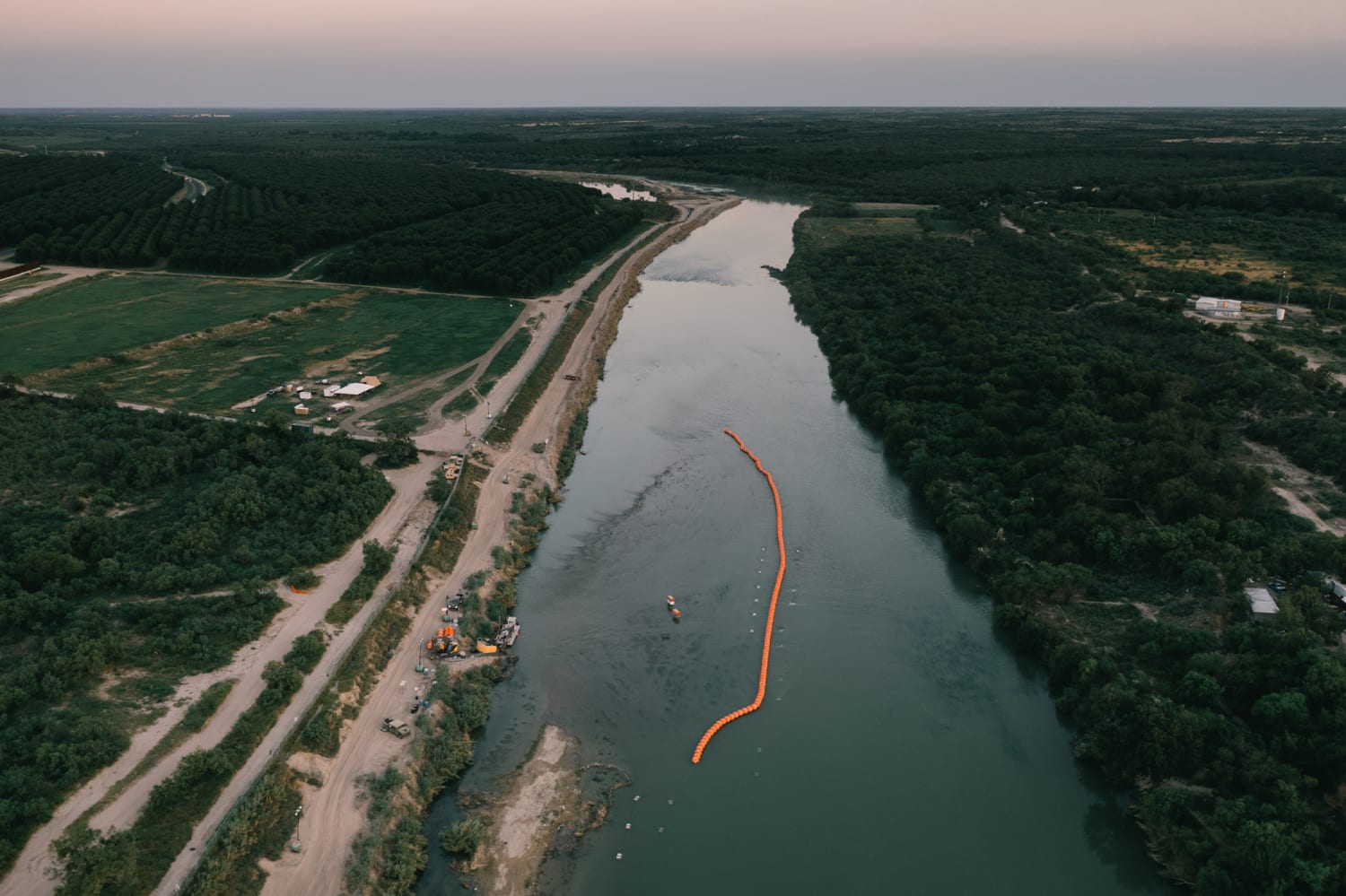The state of Texas went to court Tuesday to defend placing a string of buoys in the Rio Grande to deter people crossing the river from Mexico, a day after Gov. Greg Abbott acknowledged moving some of the barriers out of Mexican waters.
The federal government has ordered Texas to remove the barriers and filed suit against the state when Abbott refused.
A study the Justice Department submitted as part of the lawsuit showed that most of the buoys were on the Mexican side of the Rio Grande, where it is called the Río Bravo. It also showed that anchors for the buoys were on the Mexican side.
On Friday, the department said the International Boundary and Water Commission, which regulates the river and settles boundary disputes and issues, saw excavators and workers doing construction in the river and a concrete anchor being repositioned in a different location, closer to the U.S. bank. The commission had received a call about work going on Thursday night.
“The United States had no advance notice that Defendants would be performing additional work on the Floating Barrier,” the Justice Department stated in a court document filed Friday. “When questioned by counsel this afternoon (Friday), Defendants admitted Texas is presently repositioning the Floating Barrier in the river.”

Attorneys for the federal government said the repositioning of the buoys and anchors and the unauthorized construction “underscore” why the court should grant the Justice Department’s requests for a preliminary injunction in Tuesday’s hearing. The department said Texas is not only harming the United States by violating federal law governing the river, but also harming the relationship between the U.S. and Mexico and “other compelling federal interests.”
The river serves as the international border between the two countries. It hosts several vehicle and pedestrian bridges that are crossed daily, but also is traversed by people who do not have permits to cross legally.
The buoys were positioned between Eagle Pass, Texas, and Piedras Negras, in Mexico. On a visit to Eagle Pass on Monday, Abbott said the buoys were moved “out of an abundance of caution” after what he said were allegations they had drifted to the Mexican side, The Associated Press reported.
“I don’t know whether they were true or not,” Abbott said at the border, where he was joined by other Republican governors.
In a social media post on Monday, he said that Texas “won’t back down from holding the line.”
The IBWC, which conducted the study of the buoys, noted that concrete anchors for them also were in the Mexican side. The study, which was filed by the Justice Department as a document in the lawsuit, stated that 787 feet of the buoys are in Mexico. Another 208 feet are in the U.S. The section of buoys in U.S. waters are upstream, and the rest are downstream, the document stated.
Abbott also is using the large, red, round buoys in a promotional video from the governor’s office that has been posted online.
In advance of Tuesday’s hearing, several groups protested against Operation Lone Star, the governor’s immigration enforcement system, outside the Austin courthouse.
Source: | This article originally belongs to Nbcnews.com









